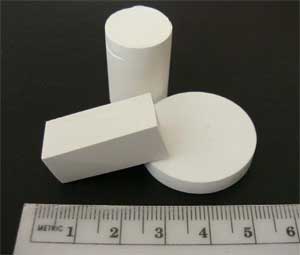cobram
Materials
- Jan 26, 2011
- 4
Hello!
First I want to apologize for my broken english.
The problem I don't understand is this.
We have rod porous materials and we want to measure modulus. We made compression tests and if I have diferent height of tablet or rod for example, the diameter is about 12mm and height is 2,3,6,9,15,...mm we got always diferent modulus. The material is not plastic, it goes back to original size after 2-3 days.
How can we obtain modulus of elasticity for our material???
Aleš
First I want to apologize for my broken english.
The problem I don't understand is this.
We have rod porous materials and we want to measure modulus. We made compression tests and if I have diferent height of tablet or rod for example, the diameter is about 12mm and height is 2,3,6,9,15,...mm we got always diferent modulus. The material is not plastic, it goes back to original size after 2-3 days.
How can we obtain modulus of elasticity for our material???
Aleš

